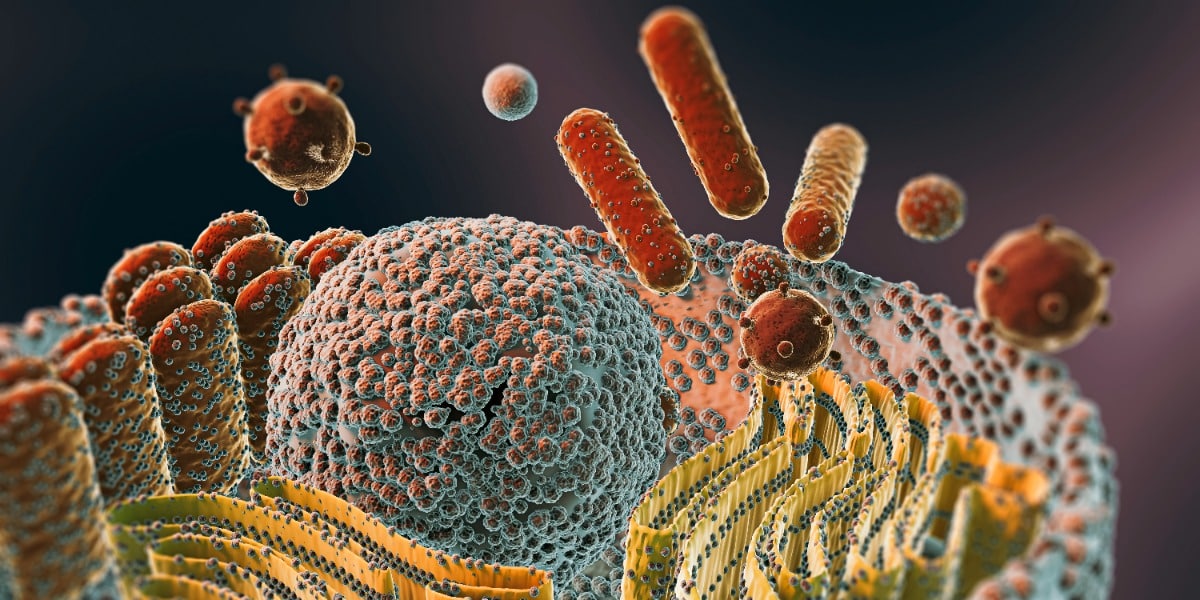
Understand the vital role of lysosomes and cellular transmission in maintaining cell health and communication. This blog explains both concepts in a clear, exam-ready format—perfect for UPSC and competitive exam aspirants.
Understanding biology at the cellular level opens a new dimension into how life functions. Two critical aspects in this invisible yet dynamic world are Lysosomes—often referred to as the "suicide bags" of the cell—and Cellular Transmission, the complex system of communication within and between cells. Let’s explore these two topics not just from a textbook view, but from a humanized, real-world perspective ideal for UPSC and other competitive exams.
Lysosomes are membrane-bound cell organelles that contain digestive enzymes. They break down waste materials, cellular debris, and even invading viruses or bacteria.
Think of lysosomes as your cellular sanitation workers—cleaning up the mess so the city (cell) keeps functioning smoothly.
Discovered by Christian de Duve in 1955.
He was awarded the Nobel Prize in 1974 for his work.
Single membrane-bound.
Contain hydrolytic enzymes (like proteases, lipases, nucleases).
Formed by Golgi bodies.
Acidic environment (pH ~5) maintained by proton pumps.
Intracellular Digestion: Breaks down worn-out organelles (autophagy).
Defense Mechanism: Destroys harmful pathogens (heterophagy).
Embryonic Development: Helps in sculpting organs by digesting unnecessary cells (e.g., removing webbing between fingers in embryos).
Cell Death (Apoptosis): When damaged, lysosomes can burst and release enzymes, leading to programmed cell death.
Recycling Center: Recycles macromolecules to be reused by the cell.
Primary Lysosomes – Newly formed, containing inactive enzymes.
Secondary Lysosomes – Formed by the fusion of primary lysosomes with vesicles; active enzymes digest contents.
Residual Bodies – Undigested waste stored within lysosomes.
Lysosomal Storage Diseases (LSDs) – Occur due to defective lysosomal enzymes.
Examples:
Tay-Sachs Disease
Gaucher’s Disease
These are often genetic and fatal, especially in children.
Cellular transmission refers to the communication system that allows cells to send and receive signals. It ensures coordination, regulation, and response across multicellular organisms.
Imagine a city where every department—transport, water, electricity—communicates to maintain order. Cellular transmission does that at the micro-level.
Autocrine Signaling – Cell signals itself.
Paracrine Signaling – Signals nearby cells (e.g., neurotransmitters).
Endocrine Signaling – Hormones travel via bloodstream to distant cells.
Direct Signaling – Through gap junctions in animals or plasmodesmata in plants.
Reception: A signaling molecule binds to a receptor on the target cell.
Transduction: Signal is converted into a form that can bring about a response (often via second messengers like cAMP).
Response: Cell alters gene expression, enzyme activity, or behavior.
Insulin signaling helps glucose enter cells.
Nerve impulse transmission across synapses.
Immune responses like inflammation.
Growth regulation during puberty.
G-Protein Coupled Receptors (GPCRs): Involved in smell, taste, vision.
Tyrosine Kinase Receptors: Common in growth factor signaling.
Ion Channel Receptors: Especially in neurons and muscles.
Coordination: From heartbeat to hormone release.
Adaptability: Responds to environmental stress.
Immunity: Helps identify and destroy foreign invaders.
Homeostasis: Maintains internal balance.
Cancer: Uncontrolled cell division due to faulty signaling.
Diabetes: Defective insulin signaling.
Autoimmune Disorders: Miscommunication in immune signals.
Neurological Disorders: Like Parkinson’s or Alzheimer’s.
A) Mitochondria
B) Lysosome
C) Golgi apparatus
D) Endoplasmic Reticulum
✅ Answer: B
Explanation: Lysosomes contain hydrolytic enzymes that can digest the cell itself when released.
A) Ribosomes
B) Enzymes
C) Hormones and neurotransmitters
D) DNA
✅ Answer: C
Explanation: Hormones and neurotransmitters are primary signaling molecules in cellular transmission.
A) DNA replication
B) Protein synthesis
C) Breakdown of cellular waste
D) Photosynthesis
✅ Answer: C
Explanation: Lysosomal enzymes help in digesting waste, old organelles, and foreign substances.
A) Autocrine
B) Paracrine
C) Endocrine
D) Synaptic
✅ Answer: C
Explanation: Endocrine signaling uses hormones to communicate with distant cells via the bloodstream.
Lysosomes are double-membrane organelles.
They help in autophagy.
They originate from the Golgi apparatus.
Which of the statements are correct?
A) 1 and 2 only
B) 2 and 3 only
C) 1 and 3 only
D) All of the above
✅ Answer: B
Explanation: Lysosomes are single-membrane-bound, not double-membrane. They do arise from the Golgi and play a role in autophagy.
A) They directly bind to DNA.
B) They transport oxygen to cells.
C) They amplify the signal inside the cell.
D) They are types of white blood cells.
✅ Answer: C
Explanation: Second messengers like cAMP amplify the signal received by receptors to initiate a cellular response.
A) It blocks photosynthesis.
B) It stops protein digestion.
C) It leads to uncontrolled cell division.
D) It affects red blood cell formation.
✅ Answer: C
Explanation: Faulty signal transmission can lead to continuous growth signals, resulting in uncontrolled proliferation—a hallmark of cancer.
Lysosomes and cellular transmission might seem like micro-level players, but their role is massive—from ensuring cells stay clean and healthy to managing how they talk to each other across systems. For any UPSC aspirant, grasping such concepts is not only helpful for science questions but also for understanding the biological underpinnings of public health, biotechnology, and environment-related policy matters. Remember—what happens at the cell level echoes throughout the body, and even society.
11-Jul-2025 02:29 PM
Explore the fascinating structure, origin, and dynamics of our Earth—from...
11-Jul-2025 02:18 PM
Understand the vital role of lysosomes and cellular transmission in...
11-Jul-2025 01:48 PM
A concise and exam-focused overview of Plasmolysis and Protoplasm, covering...
04-Jul-2025 12:46 PM
India’s education system is undergoing a major transformation to prepare...
02-Jul-2025 02:51 PM
Recent research suggests that the transfer of genes between fungi...
11-Jul-2025 01:48 PM
A concise and exam-focused overview of Plasmolysis and Protoplasm, covering...
11-Jul-2025 02:29 PM
Explore the fascinating structure, origin, and dynamics of our Earth—from...
Leave a Comment